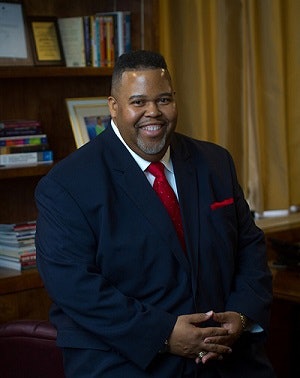For Guided Pathways to be successful, some argue, it must be a “faculty driven initiative”. The role of Student Affairs in the institutional redesign toward a Guided Pathways model however, cannot be understated. The most effective Student Affairs divisions perpetually design, realign and recalibrate services to meet changing student needs throughout the entire academic experience, from recruitment to completion.
In Understanding the Student Experience through the Loss/Momentum Framework: Clearing the Path to Completion, authors Rassen, Chaplot, Jenkins and Johnstone (2013) define the concept of the student experience as a series of interactions between learners and the college. For purposes of mapping a path to completion, the four key phases in the student’s journey – connection, entry, progress and completion – represent the loss/momentum framework.
Within the framework, students will either gain or lose momentum toward completion, in part based on the interactions they have with the institution, at any of the four identified critical phases. Policies, practices, programs and processes, both within and external to the control of the institution, affect the phases. Throughout these phases, Student Affairs professionals, in a multitude of ways, contribute to preventing student loss through attrition and creating the momentum for students to persist and complete. Three activities colleges should undertake in support of Guided Pathways following the expertise of Student Affairs professionals are: (1) implementing proactive advising models, (2) helping students fund their college experience and (3) connecting the pathway to transfer or a job.
 Dr. Michael A. Baston
Dr. Michael A. BastonProactive Advising
Many colleges implement traditional, ala carte advising models where students can come to a person or department-sponsored event primarily to select courses for subsequent semesters. This model presumes students are good at navigating complex bureaucratic systems, know what they do not know, and are sophisticated in engaging in help-seeking behaviors. Alternatively, a proactive advising model considers the student experience at critical junctures, establishes milestone expectations at those junctures for students and the advising system and provides the student the guidance and support to complete each milestone. Whether students, faculty or professional advisors direct advisement, actions that are proactive instead of reactive and are strategically integrated as part of a systematic approach can produce positive outcomes for students.
Student Financial Planning
If we know nothing else about today’s community college students from current research–particularly those who are first-generation and are from a low socioeconomic background–we know it is likely that during their educational journey “life” will happen to them. An unexpected, unplanned occurrence, usually financial in nature, will significantly influence the student’s ability to remain continuously enrolled. Helping students create a financial plan is as important as creating an educational plan. Additionally, advisors who inform students of the full array of financial and related support services should life happen, and create intentional check-ins to monitor students’ progress in the non-academic aspects of their lives will help to reduce the number of students who have to withdraw because of non-academic related matters.
Connecting the Pathway to Transfer or Careers
Students and their families understand the value of linking educational choices with post-secondary prospects in ways not fully considered in the past. Introducing transfer and career opportunities for students as they begin college, via the onboarding process, will add major value for the student experience and help clarify the path for the student. Moreover, strategically inserting conversations and supports about transfer and/or career throughout critical junctures in students’ post-secondary experiences will likely produce greater levels of college completion and positive post-college outcomes. Student affairs professionals in both the Transfer Services and Career Services areas are uniquely positioned to inform this essential redesign work.
Conclusion
Students want partners who can help them gain clarity and figure out their path and direction. Engaging students in a pathway that facilitates their personal and professional growth involves the commitment and resources, not only of the faculty, but also of the entire institution. Colleges that leverage the expertise of Student Affairs professionals in implementing proactive advising models, helping students fund their college experience and connecting the pathway to transfer or a job will create environments where students thrive, complete, and compete.
Dr. Michael A. Baston is the seventh president of Rockland Community College in Suffern, New York and is an AACC Pathways Project National Coach and a member of the Inaugural Class of the Aspen Institute Presidential Fellowship for Community College Excellence.


















